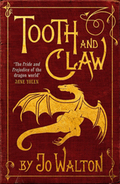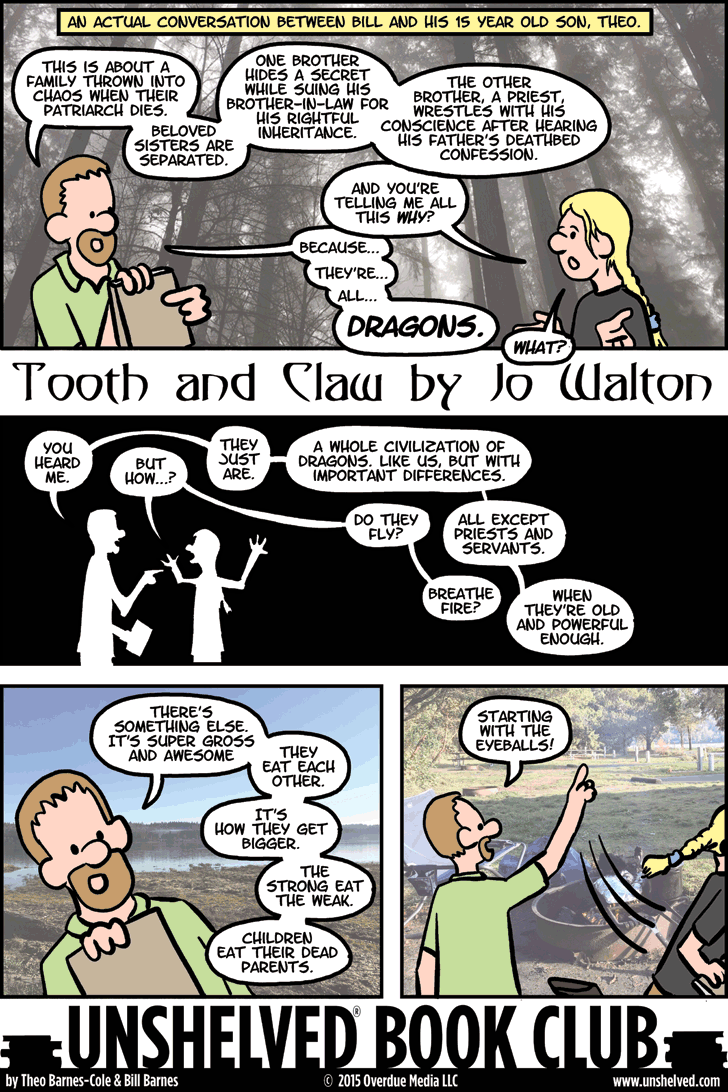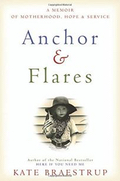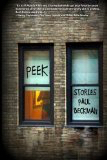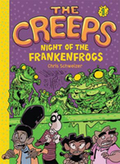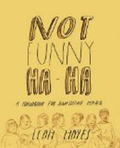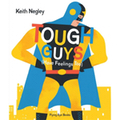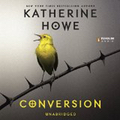Link to this review in the form of a comic strip by billba tagged fantasy
Link to this review by emilyreads tagged biography
Chaplain to the Maine Warden Service (moose, not convicts) Kate Braestrup explores the intersections of faith and public service in this collection of essays. Where her other books focused more on marriage, loss, and blended families, this one traces her son Peter’s decision to join the Marines: a decision that his ordained, police-wife mother views with both pride and trepidation.
Why I picked it up: I’ve been a Braestrup fan since her first book, Here If You Need Me. Her Unitarian faith is not too far removed from my Episcopalian beliefs, and she hits the sweet spot between funny and poignant.
Why I finished it: Braestrup raises fascinating questions about service and the debts we owe one another as members of a shared society. If we believe that public service is the highest calling, why are we still hesitant to send our own children off to the military? If we believe war is fundamentally evil, how do we reconcile the need for armed response to aggression around the world?
It’s perfect for: My friend Michelle, a foul-mouthed Army vet and devout Catholic who’s now halfway through nursing school. She’d relate to Braestrup’s experiences with loss and renewal, and she’d appreciate her no-b.s. take on the stupid things people (usually young men) do to themselves and each other.
Link to this review by flemtastic tagged nonfiction
People with physical oddities have always drawn attention. Authors Brett and Gould decided to research the beginnings of both circuses and traveling sideshows to bring the lives of freaks (the historical term the performers called themselves) into the light. Their kind, frank explorations bring these performers’ personal lives to the fore. Chapters are organized by the type of act with sidebars and photos of individuals like Bobby Kork, a working gaff (a fake, deceptive, created act) who appeared as a “half and half” (a bisected half man (on the right), half woman (on the left)) with the help of flesh colored tape, a muscular male right side (he worked out obsessively and exclusively, never exercising his left side), and a fake, exposed female breast on his left. Kork was by no means the only half and half act, just one of the most successful. After decades of performing, he became a noted photographer of drag queens and gay men, and his collection was eventually bought by Cornell University.
Throughout the book, stories like his abound, repeating and then fact-checking those put out there by promoters (which were often untrue). It’s a great read, a spectacular coffee table book, and an entertaining reference source.
Why I picked it up: The authors wanted to applaud and explain the lives of people who worked in sideshows, where they often found the only community and friendship of their lives.
Why I finished it: I was amazed to learn of places like Dreamland, the small town that Coney Island built in 1904 to look like the German city of Nuremberg, but scaled down for the 300 little people that lived there 24/7. (While they really did live there, this was primarily a paying exhibit for visitors.) The town soon closed due to uninhibited hedonism and “lewd and immoral behavior” on the part of its inhabitants. I loved details about how sideshows staged marriages between fat ladies and the skeleton men, and the giants and the little people, to draw larger audiences. For citizens coming out of the repressive Victorian age, there was nothing more salacious that seeing a tattooed woman because of her ink and also her skimpy costume.
It’s perfect for: Matt, a friend who is good at recounting strange historical events. I could easily see Matt being a carnival barker like the ones in the book whose job was to make fantastical promises about the wonders that could be witnessed for a small entrance fee. Matt would also love the differentiation between those born with physical oddities, “created freaks” like fat or tattooed/pierced people, “gaffs” (fake, created items like mermaid skeletons), and “working freaks” whose performances (not their bodies) drew attention.
Link to this review by wally tagged literary • mystery
In the 1960s, Anne, a young French woman, escapes prison by jumping over a wall. After two seconds of freedom, she smashes her ankle bone. She drags herself down the road and is picked up by Julien, another small-time criminal, who shelters her at a friend’s roadhouse where she can hide and heal in anonymity. The break is bad, though — she must go to the hospital and endure several intense surgeries and the endless boredom of hospital rooms. She and Julien fall in love, but after they are finally free to live together, how long can their love last?
Why I picked it up: The author’s short and dangerous life intrigued me (the book comes off as at least part memoir), and the introduction by Patti Smith hooked me for good.
Why I finished it: Anne’s narration is intense. She is like a cat: independent one moment, moody the next, feisty, but quick to both fight and forgive. She observes her fellow inmates (the patients at the hospital, the other small-time criminals at the roadhouse) with care and precision, but makes instant, life-changing decisions based on her mood and how much she’s had to drink. I also had to see if she and Julien could really have a lasting relationship, or if her return to prostitution and his to burglary would push them apart.
Readalikes: The Panopticon by Jenni Fagan. Both narrators are passionate young women, and although one is Scottish and hooked on drugs instead of booze, both of them explore their existence in confinement and living on the edge of the law, while seeking independence and freedom.
Link to this review by darcy tagged short stories
A collection of modern flash fiction stories that each come in between 50 and 100 words.
Why I picked it up: I was introduced to Paul by my writing mentor, M.J. Beaufrand. Paul sent me a few links to his stories online, and I couldn’t wait to read his collection.
Why I finished it: I’m completely in love with flash fiction. I seem to have a short attention span these days and a short, short story that still has the ability to tell truths about humanity is just the thing. My favorite in this collection is probably “Golda’s Story” in which a woman leaves her house, drives back home, pees, leaves again, then returns once more because she’s forgotten all about a doctor’s appointment to address her memory issues. I’ve had more forgetful days lately, and I know it’s not going to get any better as I age, so I could really relate to Golda.
It’s perfect for: Marnie from my writing group. Marnie has a rare ability to turn her daily interactions with customers at her pharmacy into tidy, one-page stories. (She doesn’t realize that she’s been writing flash all along.) I know that she will appreciate the stories about Mirsky and Elaine and their relationship issues, especially the conversations between the two. In one called “Cereal Punishments,” Elaine leaves Rice Krispies next to Mirsky’s bowl because she knows he hates them. He tries to figure out what he has done wrong. Elaine amuses herself by torturing him with little things like this until he thinks he’s in trouble and starts to confess to doing things, whether he really did them or not.
Link to this review by geneambaum tagged coming of age • graphic novel
Carol (hacker), Rosario (super strong, fashionista), Mitchell (vegan, monster expert), and Jarvis (all around badass) — mystery solvers and monster hunters collectively known as The Creeps — have just taken out a pudding monster in their school’s cafeteria. Their principal is not happy, but the janitor is — with the messes their adventures produce, he’s cleaning up financially. As part of their punishment, The Creeps are forced to take over the janitor’s regular duties, which include not only cleaning toilets but delivering frog specimens to a biology class. After a student petition that opposes dissection as inhumane, the specimens go missing. The Creeps are on the case. Who took them? Then the specimens start reappearing as electric-powered zombie frogs.
Why I picked it up: Chris Schweizer (The Crogan Adventures) was not only giving away and signing copies at last June’s American Library Association conference, he was adding a fully colored sketch.
Why I finished it: It’s about a bunch of social misfits who are excited about science. Plus, The Creeps have to enter the sewers repeatedly, first to find the secret lab of an unstable former science fair winner, and later, after an all-out frankenfrog attack, to find both help and safety. There are giant rats and poop jokes in addition to all the glowing frogs, and I enjoyed all three.
Readalikes: The Secret Science Alliance and the Copycat Crook by Eleanor Davis, another graphic novel in which school outcasts team up to do good.
Link to this review by geneambaum tagged nonfiction • graphic novel
A nonjudgmental, illustrated book that explores your options if you’re pregnant and not ready to give birth to a child. After a brief explanation of Plan B pills (which must be taken within 120 hours of becoming pregnant), medical and surgical abortions are explored via the stories of two women, Mary and Lisa. Their stories start after they decide to have abortions, with no discussion of how they got pregnant or how they made their decisions.
Why I picked it up: Because of the title and the fact that the book is nearly square I thought it was a collection of cartoons.
Why I finished it: Hayes never makes the process seem easy. The two women look shaken up, if not outright scared, to find themselves unexpectedly pregnant. Hayes’ first piece of advice is to “tell someone in your life who you trust. You don’t need to go through this alone.” She points out that the where, what, and when of an abortion are time sensitive, and an appointment should be made quickly because options can change. Then she goes through everything step by step, from questions that will be asked to the medical facts of both types of abortions to all of the waiting involved. Throughout, she stresses the thoughts and feelings running through the women’s heads, the need to talk about them, and the necessity for professional medical advice when there are questions.
It’s perfect for: My thirteen-year-old daughter. She’s an aspiring comics artist, so I know she’ll be in awe of Hayes’ simple yet emotionally resonant drawings of people and the way the book looks like it was handwritten. Plus, we had a great discussion about abortion after seeing Obvious Child together last year — it’s a romantic comedy about a young stand up comedian who decides to have an abortion — and this would give us more to talk about.
Link to this review by dawnrutherford tagged superhero • picture book
In this bold yet gentle picture book readers are shown stereotypical tough guys such as cowboys, astronauts, and pirates experiencing emotionally challenging moments like (respectively) falling off horses, missing family back on earth, and getting frustrated because they can’t find their buried treasure.
Why I picked it up: As soon as I saw this, I was dying to read it so that I could share it with the little boys in my life.
Why I finished it: It was even better than I had hoped! Negley’s text is super simple, and the message is clear: unless you’re a robot, tough guys have feelings, too, and that’s perfectly normal. I think as a small child this would be extremely reassuring. Heck, as an adult I found it comforting.
Readalikes: Negley’s illustrations are stellar. Bright primary colors depict broad-shouldered, distraught men, including a wrestler feeling anxious about his match, bestie ninjas upset about a disagreement, and a knight who has broken his sword. This would be wonderful paired with Super-Soft Heroes, a free coloring book published by Linnéa Johansson that depicts classic superheroes in tender scenes. (Think Batman wearing a baby carrier and Spider-Man on the toilet next to a spider-toddler on her potty chair.) Both are a nice visual contrast to the sorts of hyper-masculine imagery kids are so often exposed to.
Link to this review by diane tagged thriller • coming of age • audiobook
Colleen and her classmates at an exclusive prep school in Danvers, Massachusetts, are under a lot of pressure. It’s the spring of their senior year. College acceptance letters will be coming soon, followed by prom and the selection of the valedictorian. It’s no wonder that some of them are breaking under the stress. Things go from bad to worse when girls start exhibiting strange symptoms (seizures, tics, hair loss, muscle weakness, and more). Is there an outbreak of some mysterious illness? Are the girls even really sick?
Why I picked it up: It was recommended by a fellow librarian. She said it was a fast-paced story based on a real-life event.
Why I finished it: Colleen was a likable character, and she and her friends behaved in a very believable way. I was fascinated by how the girls’ story snowballed from an illness affecting a handful of them into a national news event. The alternating chapters set in old Salem during the witch trials added a great counterpoint to the story, and I couldn’t wait to see how things were resolved.
It’s perfect for: My friend Dee who is a Language Arts teacher. She’s always looking for fun ways to get students interested in classic literature. The connection to Arthur Miller’s The Crucible will be irresistible to her.
